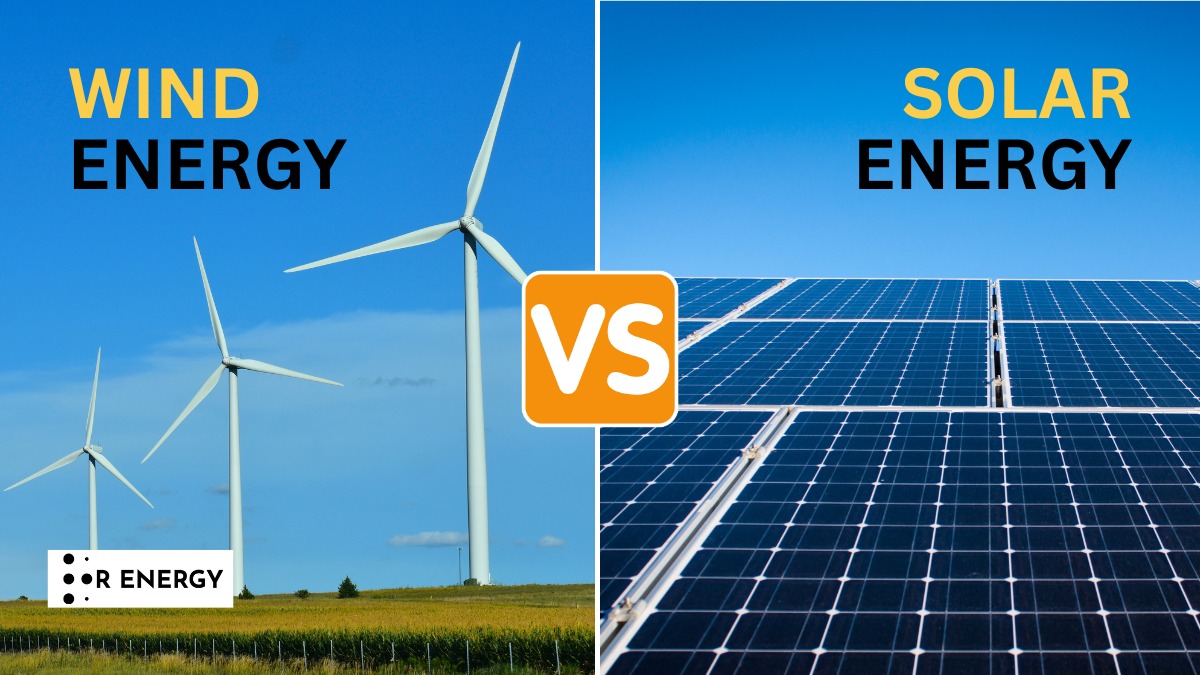
If you’ve been wondering whether to invest in solar panels or wind turbines in 2025, you’re not alone. With India pushing aggressively toward renewable energy, choosing the most efficient option—wind energy vs solar energy—has become a hot topic.
Both are clean, green, and renewable. But are they equally efficient? Efficiency isn’t just about how much energy you can produce—it’s about cost-effectiveness, reliability, and suitability for your specific needs.
Let’s break it down and help you figure out which one makes the most sense for you in 2025.
Understanding Wind and Solar Energy
Wind energy is generated by converting the kinetic energy of wind into electricity using turbines. It’s best suited for large-scale installations and coastal or high-altitude regions with consistent wind speeds.
Solar energy, on the other hand, captures sunlight using photovoltaic (PV) panels and turns it into electricity. It’s incredibly popular in residential setups due to ease of installation and scalability.
While both technologies are mature and widely used, they function differently, and that’s where the efficiency gap begins to show.
Efficiency Explained – What Do We Mean by Energy Efficiency?
Efficiency, in this context, is about how well each system converts natural energy into usable electricity. The two most important metrics are:
- Capacity Factor: Measures how often a plant runs at maximum power.
- Performance Ratio: Reflects losses during energy conversion and delivery.
For example, wind turbines typically have a capacity factor of around 30–45%, while solar panels average around 15–25% in India due to climatic variations.
Energy Conversion Efficiency: Solar vs Wind
Solar panels convert about 20% of the sunlight they receive into electricity. That may sound low, but advancements in panel design and solar tracking systems are quickly improving these numbers.
Wind turbines, especially newer models, can convert around 35–45% of the wind’s kinetic energy into electricity, making them theoretically more efficient.
However, real-world performance often depends on environmental conditions—solar energy performs more consistently in India due to predictable sunlight.
Technological Advancements in 2025
Solar has seen massive innovation in 2025:
- Bifacial solar panels that capture light on both sides
- Perovskite cells with better efficiency
- AI-powered inverters for smart energy use
Wind technology isn’t lagging either:
- Floating wind farms
- Vertical axis turbines for tighter spaces
- Improved blade design for higher efficiency in low-wind areas
Cost Efficiency and ROI
Solar systems are cheaper to install for homeowners—about ₹50,000–₹75,000 per kW. Wind turbines, though efficient, have higher upfront costs and are usually feasible only at the industrial or utility scale.
The average solar ROI period is 4–6 years, thanks to net metering and subsidies, while wind systems may take 8–10 years, depending on project size and location.
Environmental Impact Comparison
Both are far more eco-friendly than fossil fuels. However:
- Wind turbines can pose risks to birds and local ecosystems.
- Solar panel manufacturing can generate toxic waste if not handled properly.
In terms of carbon emissions, both sources are nearly zero during operation.
Reliability and Availability
Solar energy availability is more predictable in India, with over 300 sunny days a year in most regions.
Wind energy, while powerful, is region-dependent and can be inconsistent. That’s why wind farms often require backup systems or storage options.
Space Requirements
Solar panels can be mounted on rooftops, carports, or open ground. You only need about 100 sq. ft. per kW, making it ideal for homes and businesses.
Wind turbines, however, need open land and safety clearance. They aren’t suitable for dense urban areas, which limits adoption.
Application Suitability: Where Each Works Best
Solar works best for:
- Residential buildings
- Small businesses
- Rooftop installations
Wind energy suits:
- Industrial use
- Utility-scale farms
- Remote coastal or plateau regions
Government Policies and Incentives in 2025
The Indian government offers:
- Up to 40% subsidy for rooftop solar under PM Surya Ghar Yojana
- Accelerated depreciation and tax benefits for commercial wind farms
- State-specific net metering and solar rooftop schemes
Popular Regions for Wind and Solar in India
Wind hotspots:
- Tamil Nadu
- Gujarat
- Karnataka
Solar hubs:
- Rajasthan
- Maharashtra
- Telangana
These areas offer the best returns on investment due to optimal weather conditions.
Case Studies & Real-Life Comparisons
- Residential Solar Success:
A 5kW solar setup in Jaipur now saves over ₹3,000/month in electricity bills. - Wind for Industry:
A textile company in Gujarat set up a 1MW wind turbine and saw ROI in under 8 years due to state incentives.
Public Perception and Adoption Trends
Solar is the more familiar choice for individual users due to awareness, easy financing, and quick installation.
Wind energy, though powerful, is less adopted by the general public due to cost and space limitations but growing in industries and utilities.
The Hybrid Future: Combining Wind and Solar
Hybrid systems are now on the rise, especially in commercial settings.
They:
- Reduce dependency on a single source
- Optimize energy availability
- Allow better load management
Final Verdict – Which One Should You Choose?
Solar energy is more efficient for households and small businesses in India in 2025 due to affordability, consistent sunlight, and government support.
Wind energy, on the other hand, is best for large-scale commercial or industrial use where space and capital are available.
The ideal setup? A hybrid solar-wind system for maximum efficiency and round-the-clock power.
Conclusion
Both solar and wind energy have carved a strong path in India’s green energy roadmap. While solar is taking the lead in homes and cities, wind continues to power up industries and rural regions.
If you’re investing in 2025, choose based on your location, energy needs, and budget. And remember, every step toward clean energy is a win—for your wallet and the planet.

